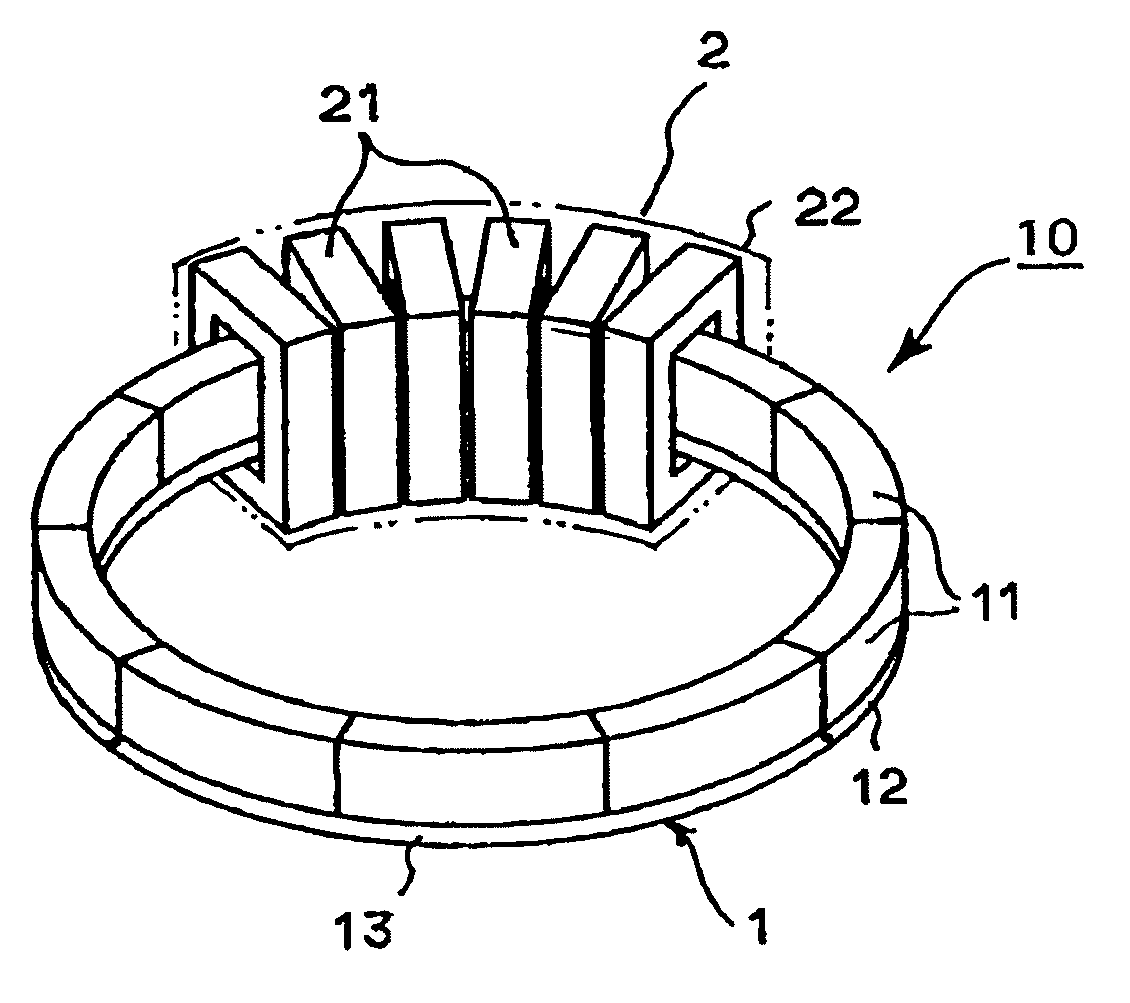Rotary actuator for auto-focusing a camera lens
a technology of rotary actuator and camera lens, which is applied in the direction of camera focusing arrangement, printers, instruments, etc., can solve the problem of difficulty in obtaining a torque level sufficient to direct drive the rotation, and achieve the effect of reducing the weight of the photographic lens
- Summary
- Abstract
- Description
- Claims
- Application Information
AI Technical Summary
Benefits of technology
Problems solved by technology
Method used
Image
Examples
embodiment 2
[0047]As shown in FIGS. 5 and 6, in the second embodiment of the rotary actuator 10A, a multi-polar magnet 1A thereof serving as a stator (which corresponds to the multi-polar magnet 1 of the rotary actuator 10) includes a plurality of (two) circular-arc-shaped pieces 11A and 11B made of an isotropic magnetic material which are arranged and fixed in a circle to form a circular ring with north and south poles of magnetized pieces of the plurality of circular-arc-shaped pieces 11A, 11B being alternately arranged at regular intervals. Additionally, in a similar manner to that in the first embodiment of the rotary actuator, a coil body 2A, which is a integral combination of the plurality of coils 21 and the coil holder 22, is loosely fitted on the multi-polar magnet 1A. FIG. 6 is a schematic cross-sectional plan view of the second embodiment of the rotary actuator. In the multi-pole magnetized type of multi-polar magnet 1A, although each south-pole or north-pole magnetized portion there...
embodiment 3
[0052]In each of the first and second embodiments of the rotary actuators, the multi-polar magnet can make the coil body 2 (2A or 2B) that serves as a mover rotate through the circumference of the multi-polar magnet (360 degrees) since the multi-polar magnet is shaped into a circular ring. Namely, the multi-polar magnet can make the coil body 2 (2A or 2B) rotate infinite times; however, in the case where the rotary actuator is configured so that the mover (coil body) only needs to be rotatable within an angular rotation range smaller than 360 degrees, the multi-polar magnet can be formed into an arc shape (i.e., does not have to be formed into a circular ring).
[0053]For instance, as shown in FIG. 8 that shows a third embodiment of a rotary actuator 10B, a multi-polar magnet 1B of the rotary actuator 10B is formed into an arc shape (C-shape) and does not form a complete circle, so that the coil body 2B reciprocally moves only within the range of the multi-polar magnet 1B in the circu...
PUM
 Login to View More
Login to View More Abstract
Description
Claims
Application Information
 Login to View More
Login to View More - R&D
- Intellectual Property
- Life Sciences
- Materials
- Tech Scout
- Unparalleled Data Quality
- Higher Quality Content
- 60% Fewer Hallucinations
Browse by: Latest US Patents, China's latest patents, Technical Efficacy Thesaurus, Application Domain, Technology Topic, Popular Technical Reports.
© 2025 PatSnap. All rights reserved.Legal|Privacy policy|Modern Slavery Act Transparency Statement|Sitemap|About US| Contact US: help@patsnap.com



